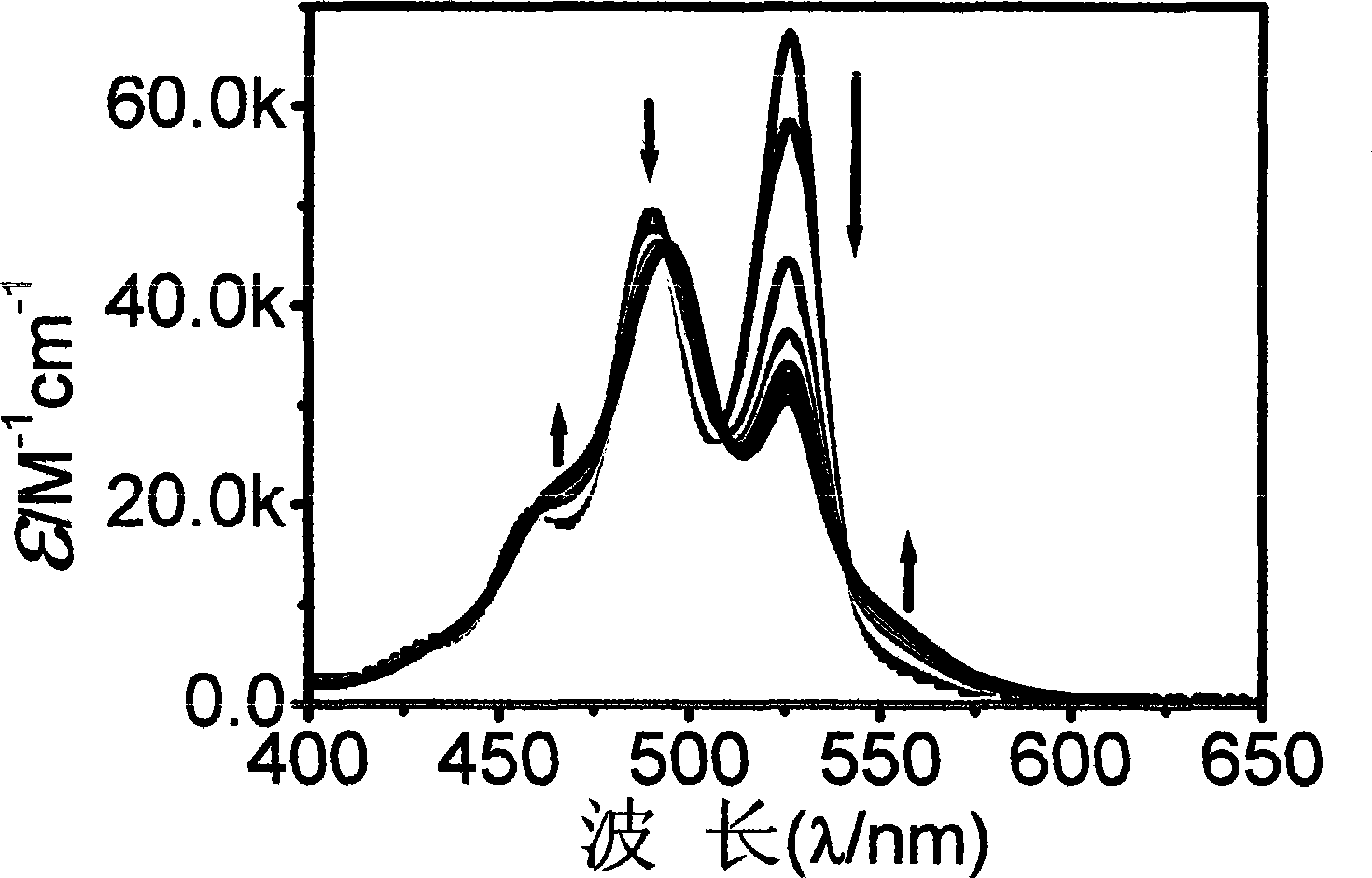Perylene-cyclodextrin nano supermolecule assembly, as well as preparation and application thereof
A supramolecular assembly, perylene diimide technology, which can be used in material excitation analysis, fluorescence/phosphorescence, etc., can solve the problem of no fluorescence response, and achieve the effect of broad application prospects.
- Summary
- Abstract
- Description
- Claims
- Application Information
AI Technical Summary
Problems solved by technology
Method used
Image
Examples
Embodiment 1
[0033] Synthesis of Perylene Diimide Derivatives Modified by Permethylated β-Cyclodextrin
[0034]The synthetic route of the fully methylated β-cyclodextrin modified perylene diimide derivatives is as follows Figure 14 shown.
[0035] at room temperature will
[0036] 6-deoxy-6-amino-permethylated-β-CD (0.94g, 0.67mmol),
[0037] Perylenetetracarboxylic anhydride (130mg, 0.33mmol) and zinc acetate (0.073g, 0.33mmol)
[0038] Added to 200 ml of pyridine solution;
[0039] The reaction system was heated to 100°C and kept at 100°C for 48 hours. The reaction was stopped, cooled to room temperature, and pyridine was evaporated under reduced pressure to obtain a red solid. Dissolve the red solid in chloroform, add a small amount of water to wash away zinc acetate, dry the chloroform phase with anhydrous sodium sulfate for 12 hours, filter to remove sodium sulfate, concentrate the chloroform phase, pass through a silica gel column, and use chloroform / methanol (volume ratio 30 / 1...
Embodiment 2
[0042] Study on the Assembly Process of Nanosupramolecular Assemblies in Aqueous Solution
[0043] in CDCl 3 In the solvent, the 8 H on the perylene aromatic ring split into four sharp peaks, indicating that in CDCl 3 PTCDI 1 is in the monomer state in the solvent, but in D 2 In the solvent of O, the four sharp peaks change into two sets of broad peaks, which is due to the strong π-π stacking effect, indicating the formation of supramolecular assemblies ( figure 1 ). The concentration of PTCDI 1 ranged from 3.0×10 -6 M changes to 1.0×10 -4 M, the extinction coefficient of the electronic transition 0-0 peak is significantly reduced, and a new shoulder peak appears at the long wavelength of 560nm ( figure 2 ). at 7.4 x 10 -5 Under the condition of M, when the temperature rises from 5°C to 70°C, it can be clearly seen that the extinction coefficient of the 0-0 peak of the electronic transition increases significantly, and the shoulder peak at 560nm gradually decreases, in...
Embodiment 3
[0045] Morphology and Optical Properties of Nanosupramolecular Assemblies
[0046] Figure 4 with Figure 5 The characteristics of the transmission electron microscope (TEM) and scanning electron microscope (SEM) of PTCDI 1, respectively, can clearly see the formation of one-dimensional rod-like assemblies. Image 6 It is an X-ray powder diffraction pattern, three groups of obvious peaks and some small peaks indicate that PTCDI 1 is a highly ordered crystal. Figure 7 with Figure 8 Polarizing and fluorescence microscopy characterization of PTCDI 1, respectively. Under crossed polarized light, very bright rod-like crystals can be seen, indicating that the optical axis of PTCDI 1 is parallel to the axis of π-π stacking of perylene molecules. Under a fluorescence microscope, strong red rod-like assemblies can be seen, indicating that they have very strong fluorescence in the solid state.
PUM
 Login to View More
Login to View More Abstract
Description
Claims
Application Information
 Login to View More
Login to View More - R&D
- Intellectual Property
- Life Sciences
- Materials
- Tech Scout
- Unparalleled Data Quality
- Higher Quality Content
- 60% Fewer Hallucinations
Browse by: Latest US Patents, China's latest patents, Technical Efficacy Thesaurus, Application Domain, Technology Topic, Popular Technical Reports.
© 2025 PatSnap. All rights reserved.Legal|Privacy policy|Modern Slavery Act Transparency Statement|Sitemap|About US| Contact US: help@patsnap.com



